When most people think of affectionate pets, bearded dragons rarely top the list. These scaly reptiles, with their spiky appearance and prehistoric look, don’t seem like the cuddly type at first glance. However, bearded dragon owners often tell a different story – one where their reptilian companions show distinct signs of recognition, preference, and yes, even affection. Though their expressions of attachment differ dramatically from mammals like dogs or cats, bearded dragons have their own unique language of bonding that, once understood, reveals a surprising capacity for connection. This article explores the fascinating ways these popular reptile pets communicate affection and form bonds with their human caregivers.
The Science Behind Reptilian Affection
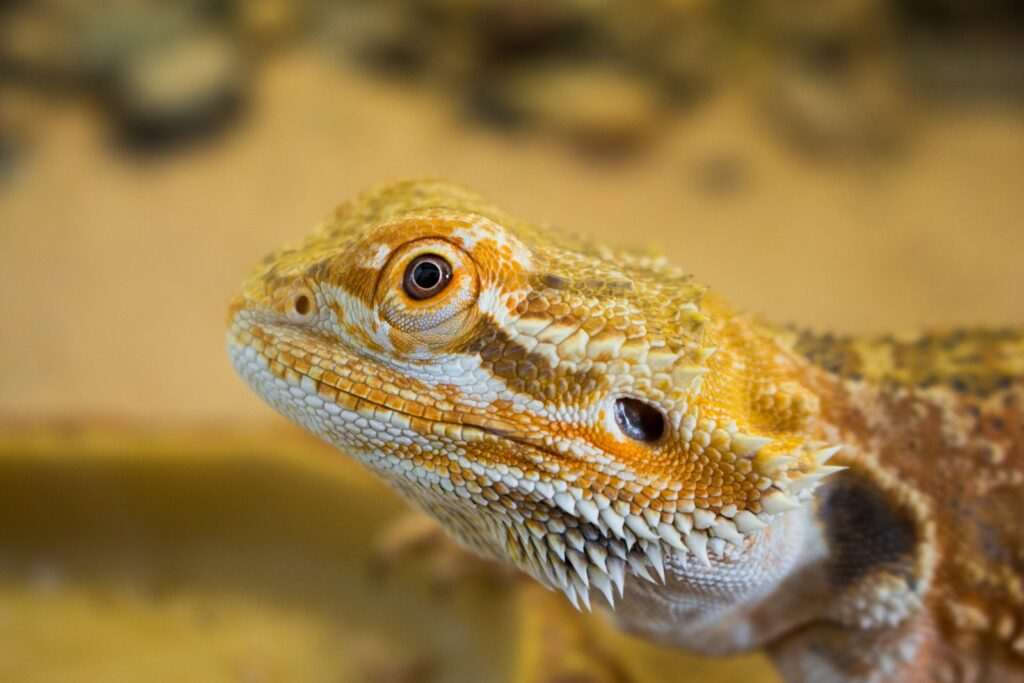
Understanding bearded dragon affection requires acknowledging that reptile brains differ fundamentally from mammal brains. Bearded dragons lack a neocortex, the brain region responsible for complex emotions in mammals, leading some scientists to argue they cannot feel “love” as we understand it. However, recent research suggests reptiles possess more cognitive abilities than previously thought. Studies have demonstrated that bearded dragons can recognize their owners, distinguish between familiar and unfamiliar humans, and form preferences for specific people. Their limbic system, which processes basic emotions like fear and pleasure, appears more developed than once believed. While their experience of affection certainly differs from mammals, evidence suggests these reptiles can form genuine bonds with their caretakers beyond mere food association.
Recognizing Their Owners

One of the clearest signs of a bond between bearded dragons and their owners is recognition. Many bearded dragons respond differently to their regular caretakers than they do to strangers, showing increased activity and interest when their owner enters the room. Some will track their owner’s movements across the room, turning their heads to follow their human companion. This recognition often manifests as excited behavior when the owner approaches their enclosure, particularly after periods of absence. Long-term owners frequently report that their bearded dragons will respond to their voice specifically, sometimes perking up or becoming alert even when the owner isn’t visible but can be heard nearby. These recognition behaviors suggest bearded dragons form distinct mental representations of their primary caretakers.
The Beard Display of Happiness
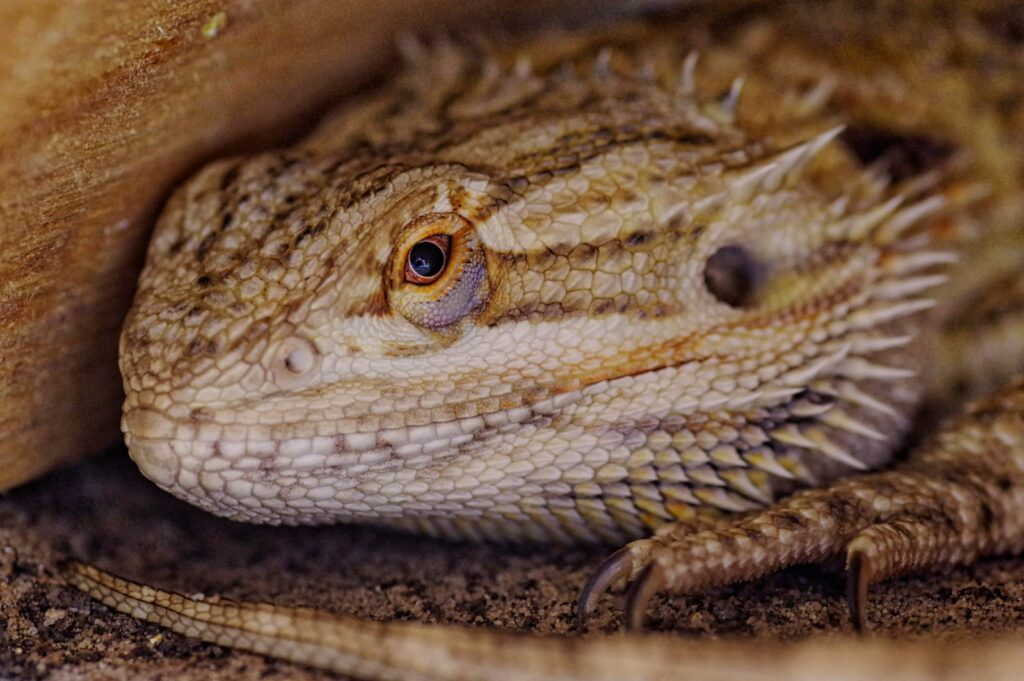
The signature feature of bearded dragons—their expandable throat pouch or “beard”—can actually indicate contentment when displayed in certain contexts. While beard puffing often signals aggression or stress, a relaxed, slightly darkened beard accompanied by a calm demeanor can indicate comfort in an owner’s presence. This subtle display differs markedly from the fully blackened, dramatically extended beard seen during threat displays. Experienced owners learn to distinguish between these states and recognize when their pet’s beard shows subtle signs of positive excitement rather than stress. The beard may darken slightly when the dragon is happily basking in their owner’s attention, almost like a reptilian version of a pleased expression. This nuanced beard behavior represents one way these reptiles communicate their emotional state to attentive owners.
Seeking Physical Contact
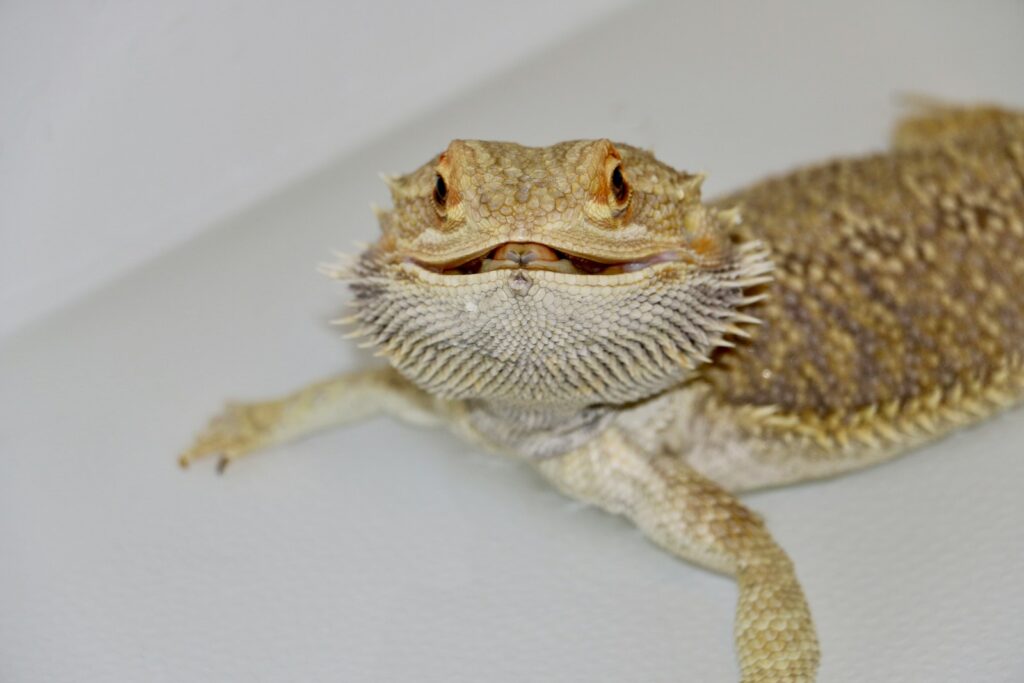
Perhaps the most surprising affectionate behavior in bearded dragons is their willingness to seek physical contact with trusted owners. Many bearded dragons actively climb onto their owners’ shoulders, nestle against necks, or snuggle into shirt pockets or sleeves. This behavior goes beyond simple heat-seeking, as they often choose their owner over equally warm alternatives. Some bearded dragons will deliberately walk across their enclosures when their owner approaches, positioning themselves to be picked up. Many owners report their dragons relaxing completely when held, closing their eyes and settling into a comfortable position against their bodies. This voluntary seeking of physical proximity and contact represents one of the clearest signs of trust and bonding in these reptiles.
Arm Waving as a Sign of Trust
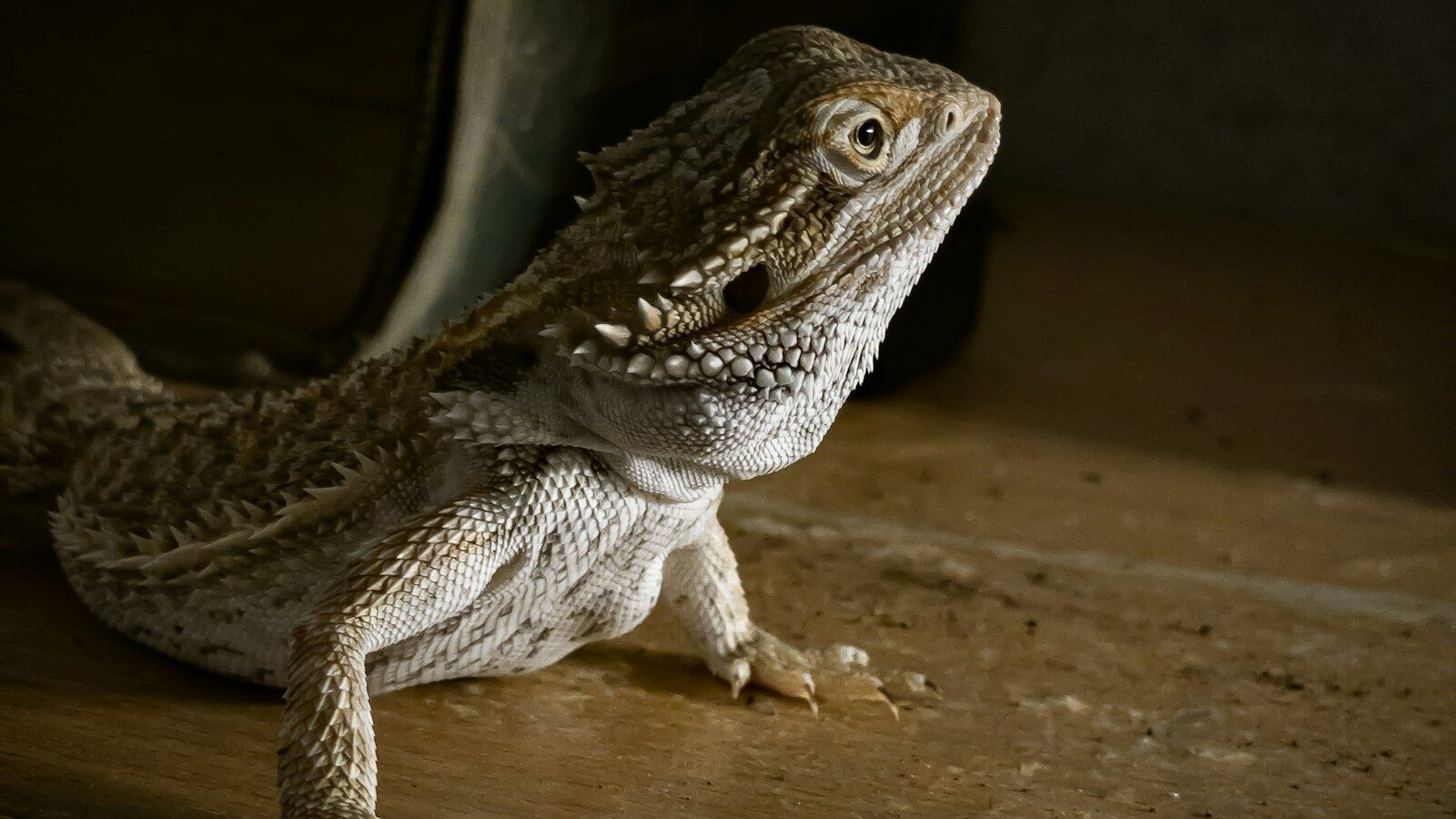
Arm waving, where bearded dragons raise one forearm and rotate it in a circular motion, often indicates submission in dragon-to-dragon interactions. However, when directed toward a trusted owner, this gesture takes on a different meaning. In the context of a positive human-dragon relationship, arm waving often signifies recognition and comfort rather than fear. Many owners observe their dragons wave shortly after recognizing them, almost like a greeting ritual. This behavior demonstrates the dragon feels secure enough to perform a vulnerable gesture, showing they don’t perceive their owner as a threat. Consistent arm waving in an otherwise relaxed dragon often develops after months of positive interactions, serving as a marker of an established bond.
The Relaxed Flat Beard
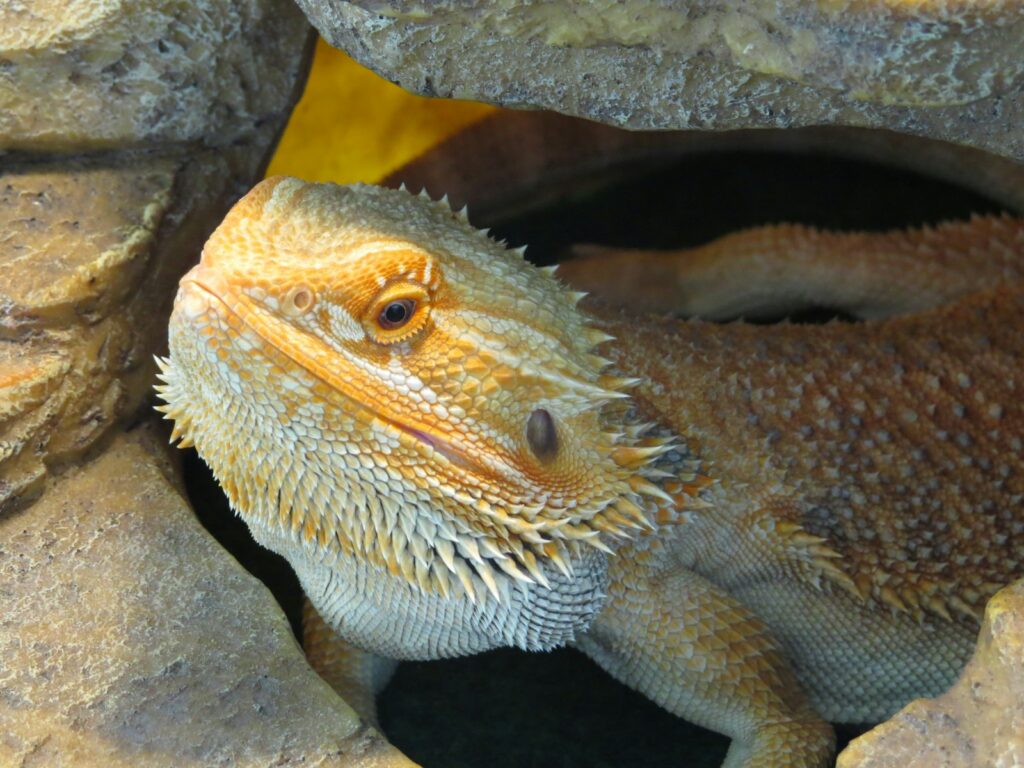
A relaxed, flat beard position is a subtle but significant indicator of comfort and trust in bearded dragons. When feeling threatened or defensive, bearded dragons instinctively puff their beards to appear larger and more intimidating. Conversely, a completely relaxed beard, lying flat against the throat while in an owner’s presence, signals the dragon feels no need for defensive displays. This relaxed posture becomes particularly meaningful when the dragon maintains it while being handled. Many owners notice their dragons’ beards remain consistently flat during handling sessions after a bond has developed, whereas newer or less comfortable dragons may show occasional puffing. This physical indicator provides a reliable gauge of a bearded dragon’s comfort level with their human companion.
Licking Behaviors and Recognition
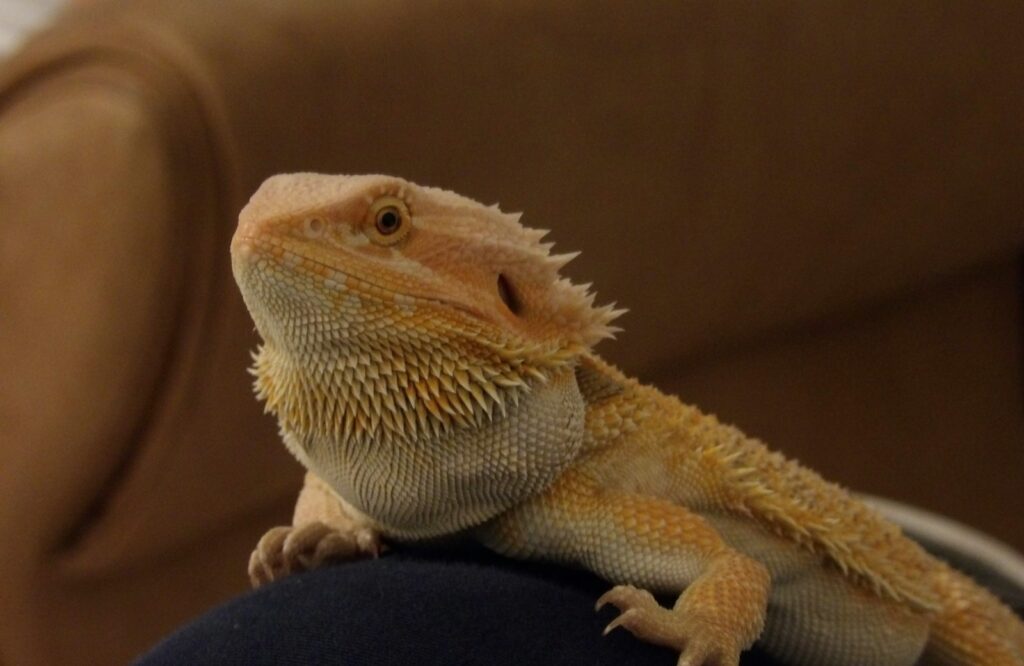
Bearded dragons use their tongues not just for eating but as primary sensory organs to explore and understand their environment. When a bearded dragon gently licks their owner’s hand or arm repeatedly, they’re gathering scent information that helps them recognize and become familiar with their caretaker. These licking behaviors often increase when dragons are developing comfort with a new owner. Over time, many dragons show excited licking behavior specifically when their regular caretaker approaches, suggesting they recognize and anticipate interaction with that specific person. This sensory exploration represents the dragon’s way of confirming “yes, this is my human,” and frequently transitions from cautious investigation to enthusiastic greeting as the relationship develops.
Playing and Responding to Interaction
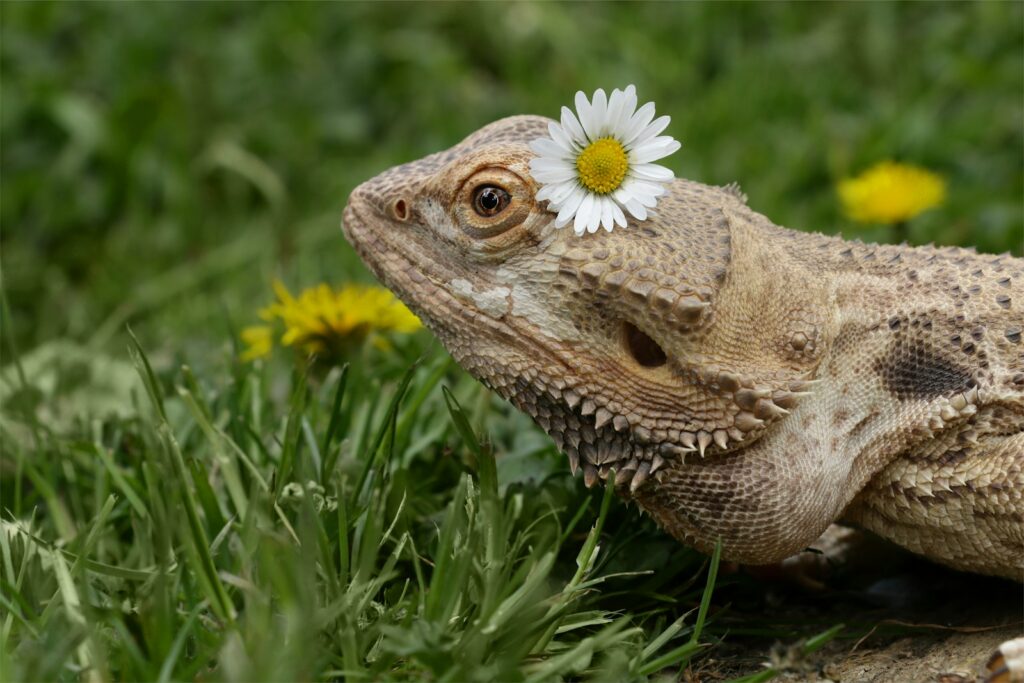
Some bearded dragons engage in what appears to be play behavior with their owners, a significant indication of comfort and positive association. These play behaviors might include chasing fingers moved slowly across their enclosure substrate, following a favorite toy moved by their owner, or even engaging in gentle tug-of-war with soft objects. Many dragons become visibly more alert and active when their owner initiates these interactions, showing heightened interest compared to their typical resting behaviors. Some particularly bonded dragons even develop games unique to their relationship with their owner, such as hiding under specific objects only to emerge when called. While not as elaborate as dog or cat play, these interactive behaviors demonstrate a willingness to engage socially beyond merely tolerating human presence.
Excitement During Feeding Time

While food excitement isn’t unique to affectionate relationships, the specific way a bonded bearded dragon responds to their owner during feeding times often differs from mere food association. Many dragons learn to associate their specific owner with positive feeding experiences and show distinctive excitement when that particular person approaches with food, compared to their reaction to strangers offering the same items. Some bearded dragons develop specialized “food dances,” bobbing their heads or moving in characteristic ways specifically when their bonded owner prepares their meal. Owners often report their dragons will eagerly take food from their hands while refusing the same items from unfamiliar people. This preferential feeding response indicates recognition and positive association that extends beyond simple conditioning.
Head Bobbing as Communication

Head bobbing in bearded dragons serves multiple communicative purposes, with rapid bobbing typically indicating dominance or territorial displays. However, many bonded dragons develop a distinct, gentler form of head bobbing specifically when interacting with their owners. This softer bobbing, often described as a slow, rhythmic nodding, frequently occurs when a familiar caretaker approaches or during handling sessions. Unlike the aggressive, jerky bobbing seen in dominance displays, this interaction-specific bobbing appears more controlled and deliberate. Experienced owners learn to distinguish their dragon’s “happy bobs” from stress-related ones, recognizing the subtle differences in speed and intensity. This specialized form of communication often develops only after months of regular positive interactions, suggesting it represents a form of greeting or acknowledgment reserved for trusted humans.
Stress Reduction Through Bonding
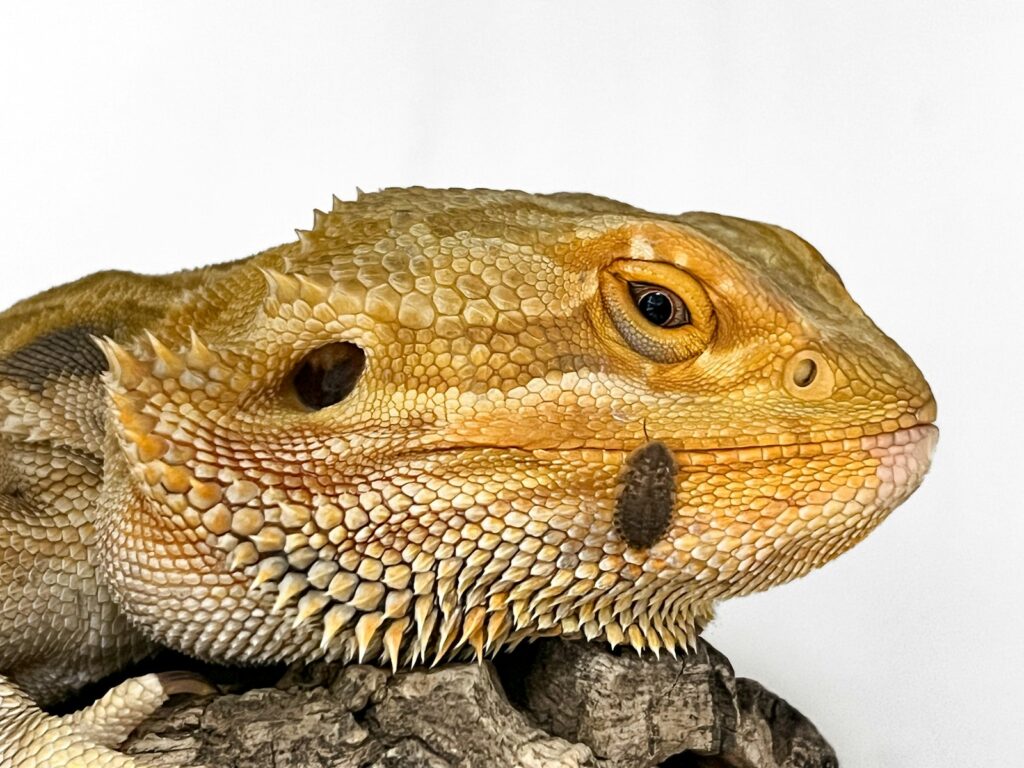
One of the most compelling demonstrations of bearded dragon affection comes from observing how bonded dragons show dramatically reduced stress responses when handled by their regular caretakers. A bearded dragon who trusts their owner will display relaxed muscles, normal coloration, and calm breathing when handled, in stark contrast to the darkened color, rapid breathing, and tense posture seen when stressed. Many veterinarians report that well-bonded dragons remain noticeably calmer during examinations when their familiar owner is present and holding them. This stress reduction effect often becomes more pronounced over time, with dragons who initially showed fear responses gradually developing comfort through consistent positive handling. The physiological evidence of reduced stress hormones during interaction with a bonded owner provides biological confirmation of the affectionate relationship.
Coming When Called
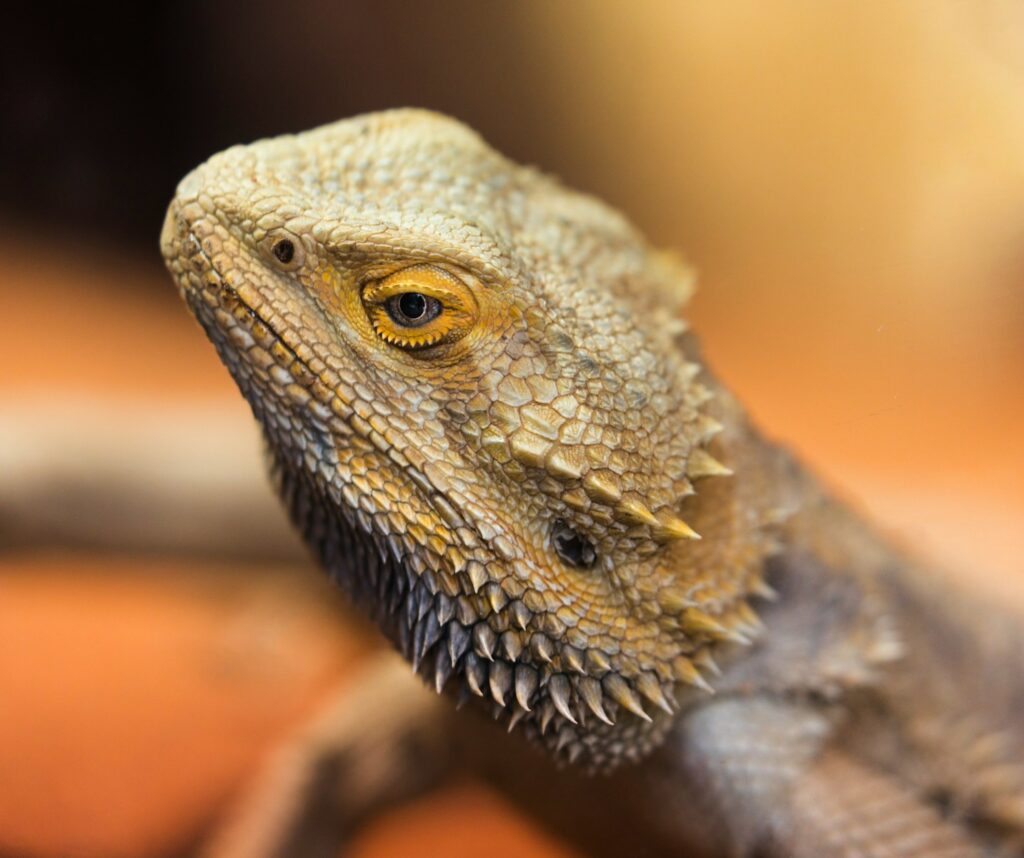
Perhaps one of the most dog-like behaviors some bearded dragons develop is responding to their name or coming when called by their owner. This remarkable behavior typically emerges only in dragons with strong bonds to their caretakers. After consistent positive associations, some bearded dragons learn to associate specific sounds or names with their owner’s attention and will actively move toward the source when they hear their “name” called. Many owners report their dragons will emerge from hiding spots, climb to the front of their enclosures, or even cross rooms when summoned by their specific person. This response demonstrates not only recognition of the owner’s voice but a genuine desire for interaction that transcends simple food association, particularly when the dragon responds even outside regular feeding times.
Building a Bond With Your Bearded Dragon
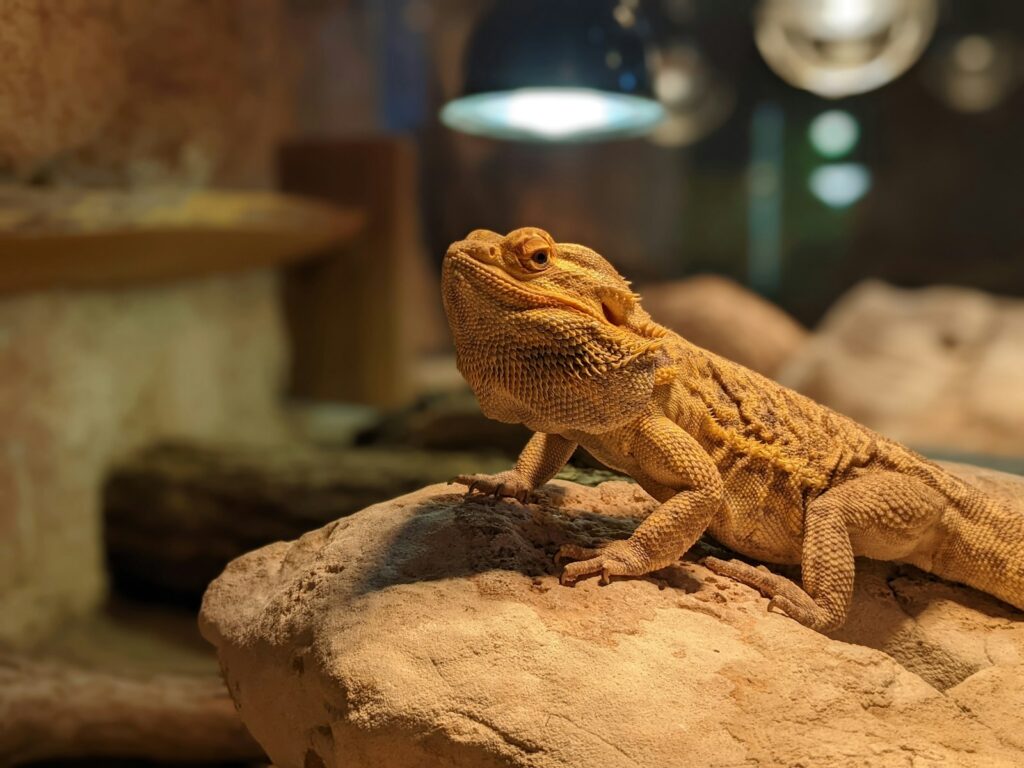
Developing affection with a bearded dragon requires patience, consistency, and respect for their natural behaviors. The foundation begins with proper husbandry—maintaining appropriate temperature gradients, UVB lighting, diet, and enclosure size creates the baseline security necessary for a dragon to develop trust. Regular gentle handling sessions that respect the dragon’s comfort level gradually build positive associations with human contact. Many experienced owners recommend hand-feeding favorite treats to establish yourself as a source of positive experiences. Keeping handling sessions initially brief (5-10 minutes) and gradually extending them as the dragon shows comfort helps prevent stress and negative associations. Most importantly, respecting your dragon’s individual personality and preferences—some are naturally more outgoing, others more reserved—allows the relationship to develop at a pace comfortable for your specific pet.
When Your Dragon Might Not Feel Affectionate
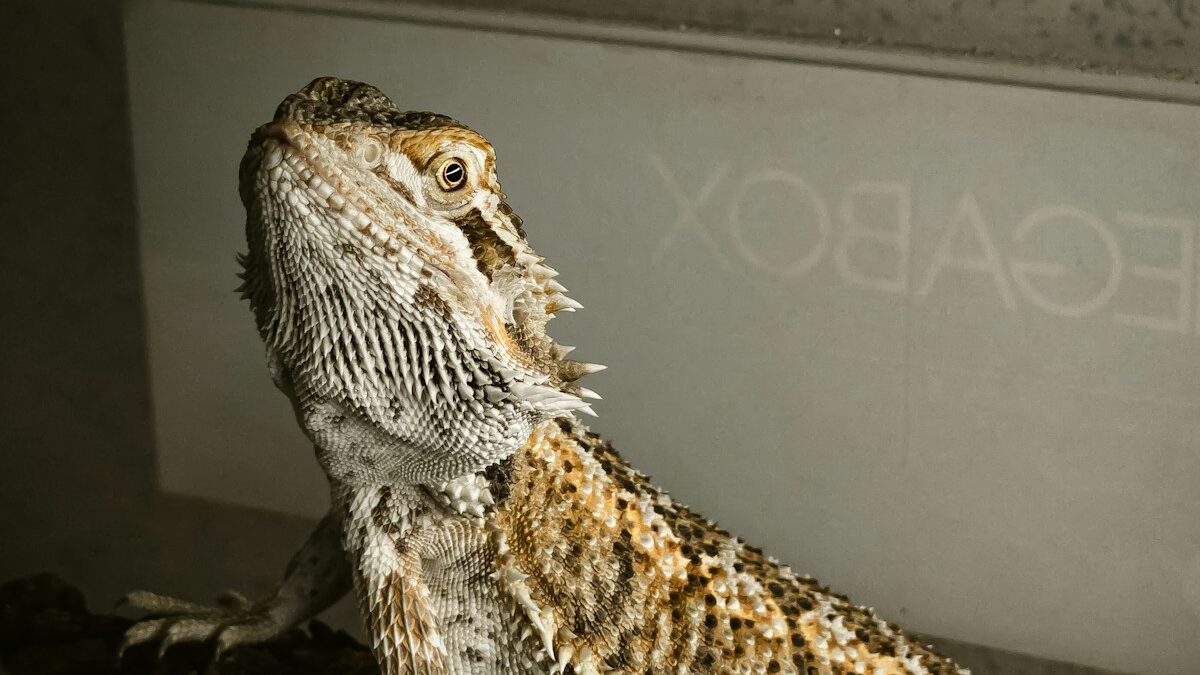
Understanding when a bearded dragon isn’t feeling affectionate helps strengthen the relationship by respecting their boundaries. During brumation (their winter slowdown period), bearded dragons naturally become less interactive and may reject handling they previously enjoyed—this represents a normal biological process rather than a relationship change. Similarly, females preparing to lay eggs often become temporarily less receptive to interaction. Illness can dramatically alter a dragon’s behavior patterns, with formerly affectionate pets suddenly avoiding contact when unwell. Even environmental factors like recent cage rearrangements or the introduction of new pets can temporarily disrupt the typical affectionate behaviors. Recognizing these natural fluctuations and responding with appropriate space and care demonstrates respect for your dragon’s needs and ultimately strengthens the trust between you.
Conclusion: Understanding Reptilian Affection

Bearded dragon affection manifests differently from the familiar displays of dogs or cats, requiring owners to adjust their expectations and learn a new language of bonding. While these reptiles may never wag tails or purr, their subtle communications of trust and preference reveal genuine connections forming between species with vastly different evolutionary histories. Understanding bearded dragon affection means appreciating these relationships on their own terms—not as lesser versions of mammalian bonds, but as unique interspecies connections with their own validity and depth. The growing recognition of reptilian emotional capacity challenges outdated notions that dismissed these creatures as merely instinct-driven automatons. For those willing to learn their language and respect their nature, bearded dragons offer a fascinating window into how affection and bonding can transcend the boundaries of dramatically different nervous systems and evolutionary paths.

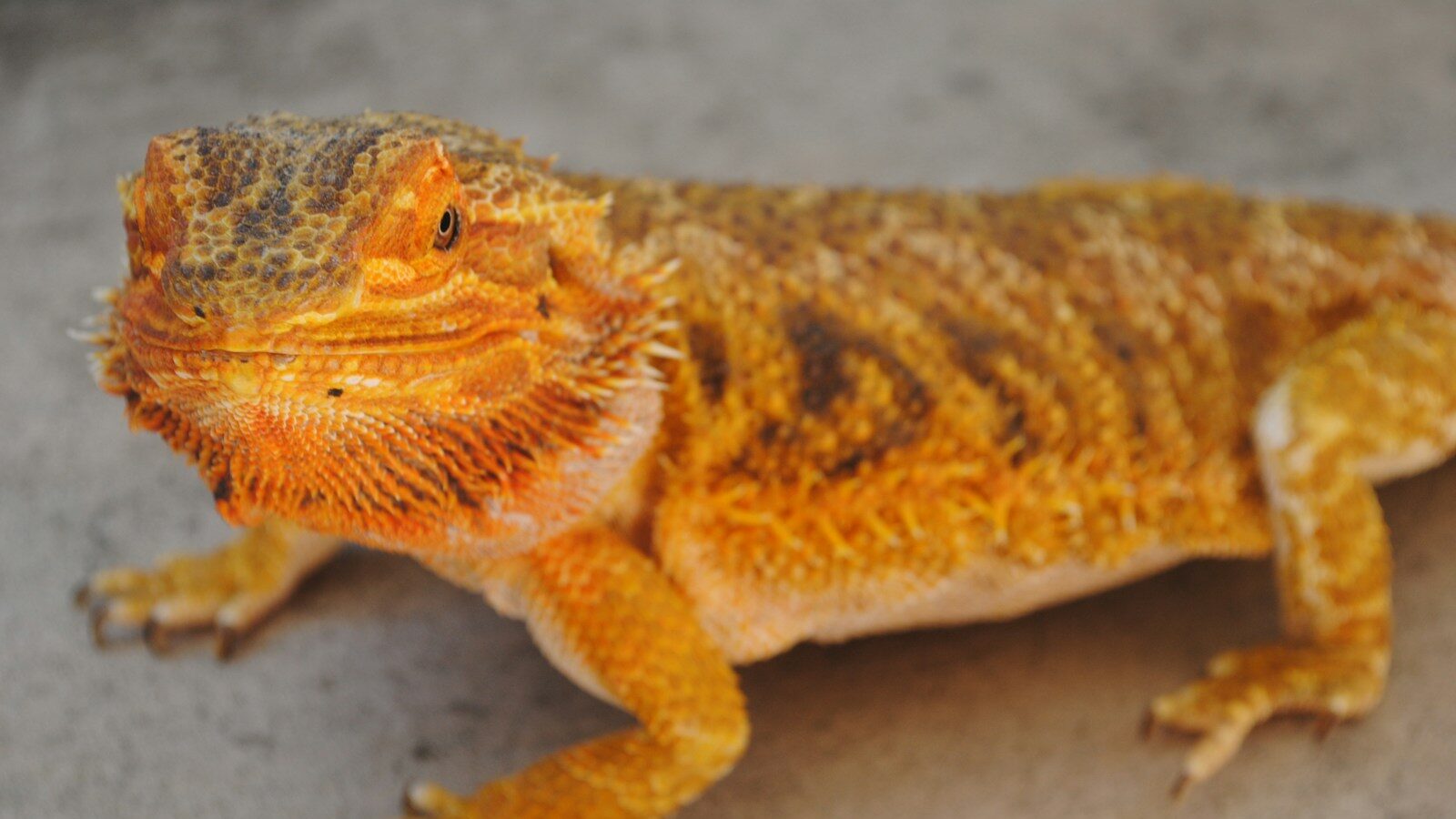





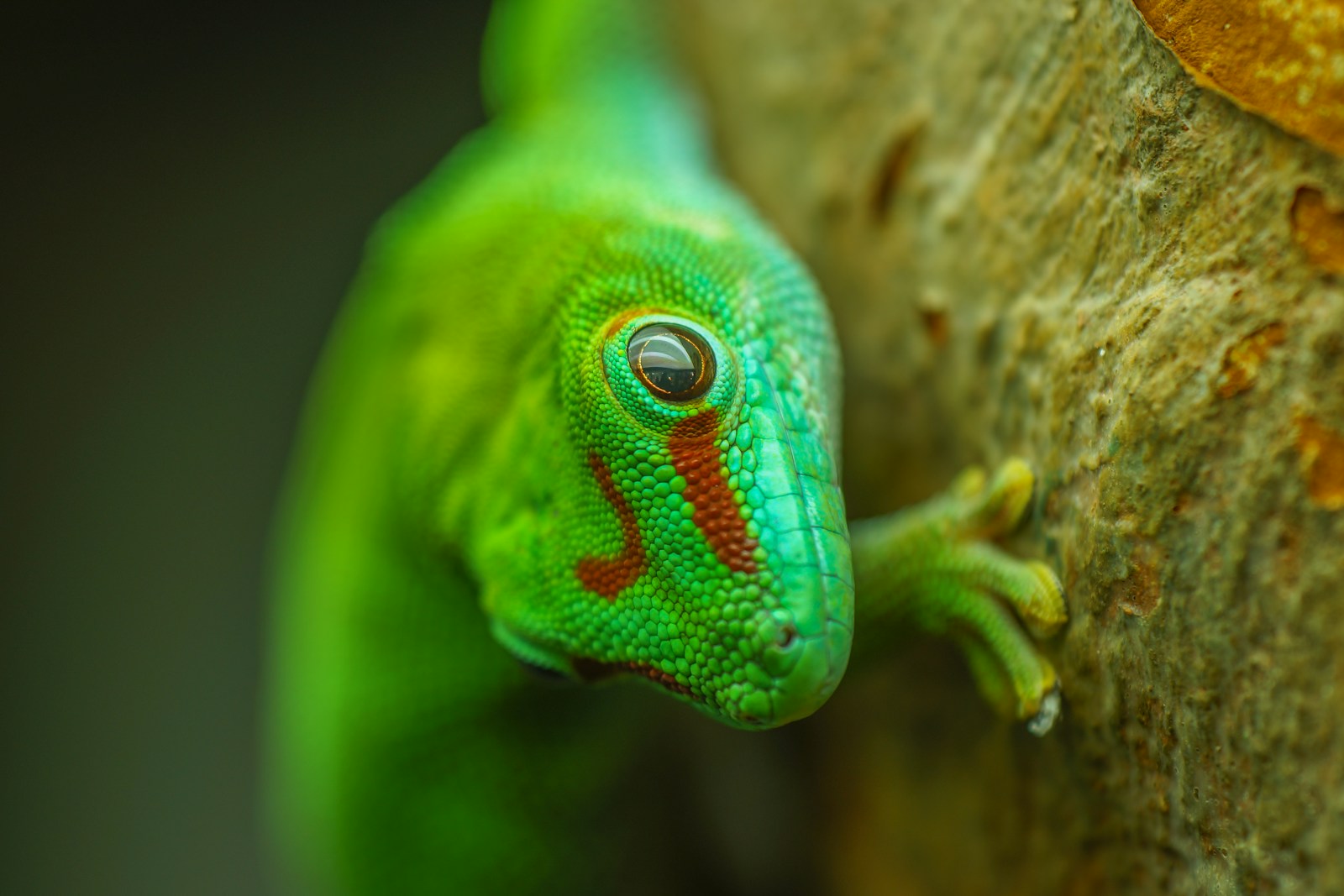
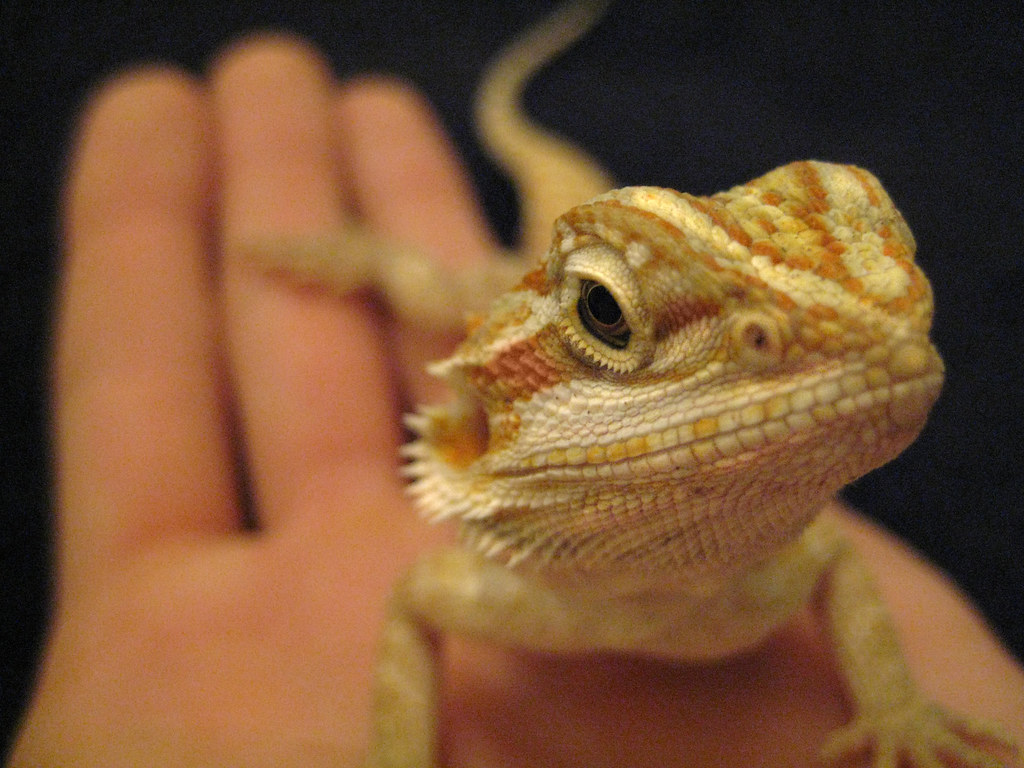


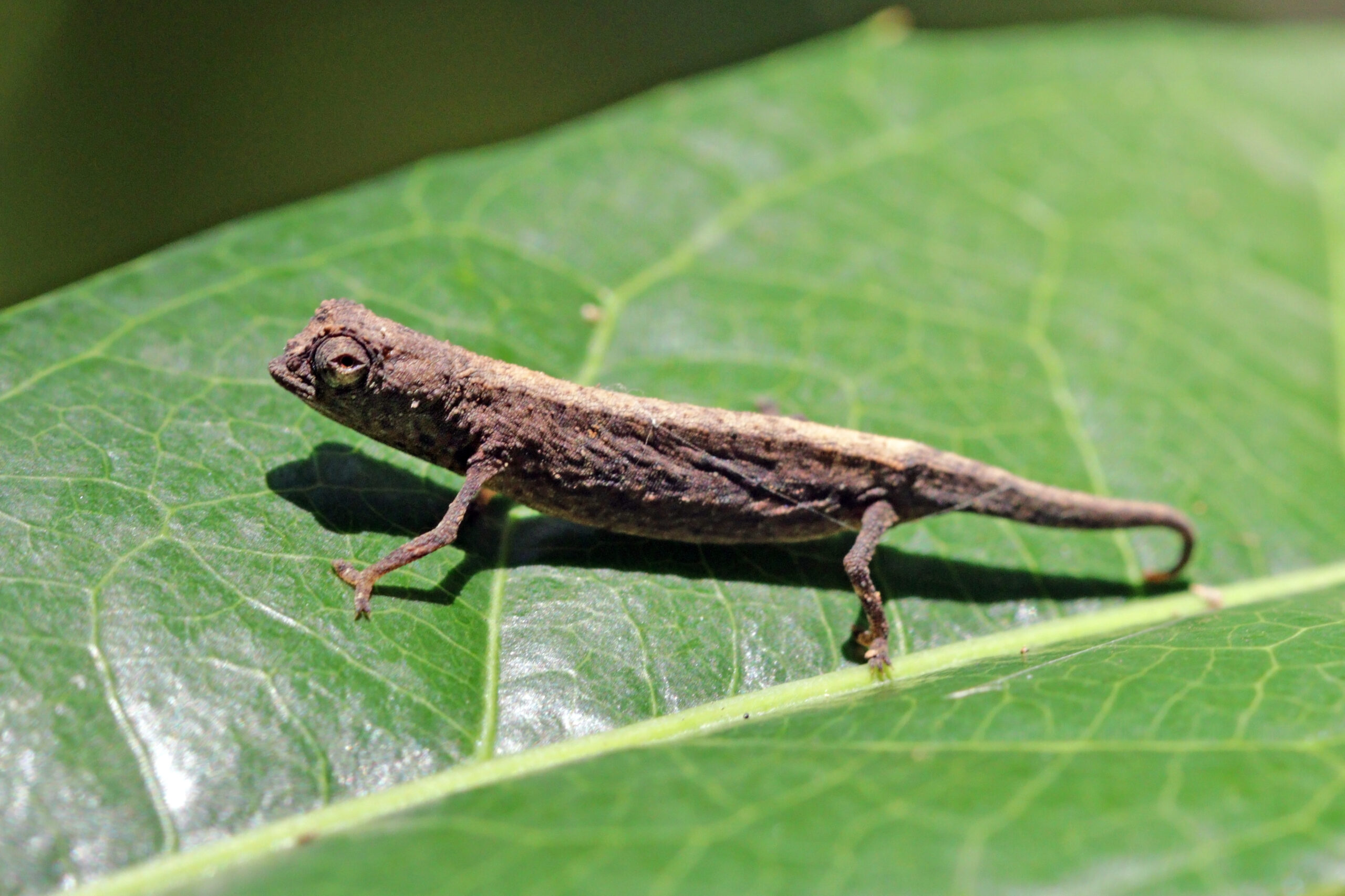




Leave a Reply